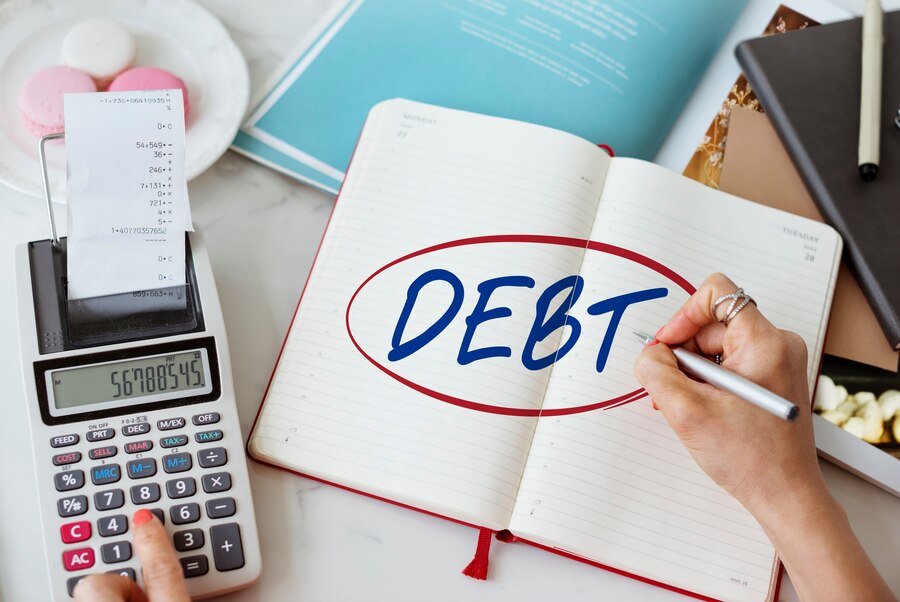Managing debt can often feel overwhelming, especially if you’re juggling multiple loans, high interest rates, and mounting bills. If you find yourself unable to make ends meet, one potential solution is applying for loan settlement or debt settlement. These options can offer relief from financial pressure by negotiating with creditors to reduce the total debt owed, allowing you to regain control of your financial situation.
However, applying for loan settlement or debt settlement can be complex, and it’s essential to understand the steps involved, the benefits, and the potential drawbacks before you proceed. In this comprehensive guide, we will take you through the process of applying for loan settlement or debt settlement, the factors to consider, and how to make the best decision for your financial future.
What is Loan Settlement and Debt Settlement?
Before delving into the application process, it’s important to clarify what loan settlement and debt settlement entail.
Loan Settlement refers to negotiating with a lender or creditor to reduce the total amount owed on a loan. It’s often pursued when the borrower is unable to make the full repayment due to financial hardship. Loan settlement can apply to personal loans, auto loans, or mortgages, though it is more common with unsecured debts like credit cards or personal loans.
Debt Settlement is the process of negotiating with multiple creditors to reduce the overall debt owed. Typically, a third-party debt settlement company acts as an intermediary between you and your creditors. The goal is to settle the debt for a lower lump sum amount than the full balance owed. Debt settlement is typically used for unsecured debts, such as credit cards, medical bills, and personal loans, and can significantly reduce the total amount owed.
Both loan settlement and debt settlement share the common goal of reducing the burden of debt, but the process and options for negotiating may differ based on whether you’re dealing with a single loan or multiple creditors.
1. Understanding When to Apply for Loan Settlement or Debt Settlement
The first step in applying for loan or debt settlement is recognizing when this option might be appropriate for your financial situation. Not everyone will benefit from loan or debt settlement, so it’s crucial to understand when these strategies are suitable.
When to Consider Loan or Debt Settlement:
Overwhelming Debt: If your debt has become unmanageable and you’re unable to make timely payments, debt settlement can offer a way out by reducing the amount you owe.
Financial Hardship: If you’re experiencing a financial crisis due to job loss, medical emergencies, or other personal circumstances, loan settlement and debt settlement can provide immediate relief.
Inability to Keep Up with Minimum Payments: If you’re only able to make the minimum payments on your credit cards or loans and the principal balance isn’t decreasing, it might be time to explore settlement options.
Risk of Legal Action: If your creditors have begun threatening legal action, such as lawsuits or garnishment of wages, settling the debt can be a way to avoid these consequences.
While settlement can offer significant relief, it’s essential to weigh the potential impact on your credit score, your ability to qualify for future loans, and any tax implications. Before applying for loan or debt settlement, ensure you have a clear understanding of the benefits and risks.
2. Step-by-Step Guide to Applying for Loan Settlement or Debt Settlement
If you’ve determined that loan or debt settlement is the right choice for you, the next step is to begin the application process. The steps for applying for loan settlement or debt settlement can vary depending on whether you’re applying for loan settlement directly with a creditor or working with a third-party debt settlement agency. Below, we provide a step-by-step guide for both approaches.
A. Applying for Loan Settlement Directly with a Creditor
Assess Your Financial Situation Before contacting your creditor, evaluate your current financial position. Understand how much you owe, the terms of your loan (interest rates, repayment schedule), and whether you can afford to make a lump sum payment or structured settlement.
Review your budget to determine how much you can realistically afford to pay toward a settlement.
List all your debts, including balances, due dates, and interest rates, to identify which ones are most pressing.
Contact Your Creditor Reach out to your creditor or lender directly to discuss your financial situation. Be honest about your inability to make full payments and inquire about the possibility of negotiating a loan settlement.
Explain Your Hardship: When you contact the creditor, explain why you’re unable to meet your payment obligations (e.g., loss of income, medical bills, etc.).
Request Settlement Options: Ask if they are willing to negotiate a reduced lump sum payment or modify the terms of the loan. Be clear about what you can afford to pay.
Get Everything in Writing: If the creditor agrees to a settlement, ensure that you receive written confirmation of the terms before making any payment.
Negotiate the Settlement Terms In some cases, the creditor may offer a settlement amount that is lower than what you owe. However, don’t accept the first offer without considering your options.
Counteroffer if Necessary: If the settlement offer is too high, you can propose a lower amount that fits within your financial capabilities.
Understand the Impact on Your Credit: Discuss how the settlement will be reported to the credit bureaus. A settled debt will impact your credit score, but it can still be less damaging than missing payments or declaring bankruptcy.
Make the Payment Once the terms have been agreed upon, arrange for payment. Creditors may request a lump sum payment or an installment plan.
Get Proof of Payment: Always request a receipt or confirmation after making the payment. This serves as proof that the debt was settled.
Follow Through: Stick to the agreed-upon payment schedule and ensure that you fulfill your obligations in full.
Monitor Your Credit Report After the debt has been settled, keep an eye on your credit report to ensure that the debt is marked as “settled” or “paid in full.” You may also want to monitor your credit score to track the impact of the settlement.
B. Applying for Debt Settlement with a Third-Party Agency
Research Debt Settlement Agencies If you’re not comfortable negotiating with creditors directly or have multiple debts, you may want to work with a debt settlement company. Research reputable debt settlement agencies to find one that aligns with your needs.
Check for Accreditation: Look for agencies accredited by organizations such as the American Fair Credit Council (AFCC) or the International Association of Professional Debt Arbitrators (IAPDA).
Read Reviews: Look for customer reviews or testimonials to gauge the agency’s reputation and success rate.
Consult with a Debt Settlement Agency Once you’ve identified a reputable agency, schedule a consultation. The agency will typically assess your financial situation, review your debt, and discuss settlement options.
Provide Financial Information: Be prepared to provide detailed information about your income, expenses, debts, and financial hardship.
Understand the Fees: Debt settlement agencies typically charge fees that range from 15% to 25% of the debt they settle. Ensure that you understand how and when these fees will be charged.
Agree on a Debt Settlement Plan If you choose to work with a debt settlement agency, they will develop a plan to settle your debt. This typically involves setting up a dedicated escrow account where you will deposit funds monthly.
Review the Terms: Carefully review the terms of the debt settlement agreement, including the total amount you’ll be required to pay and the timeline for settlement.
Evaluate the Risks: Keep in mind that not all creditors may agree to a settlement, and there could be risks such as fees or tax implications.
Make Regular Payments into the Escrow Account Once your agreement is in place, you will begin making monthly payments into the escrow account. The debt settlement company will use these funds to negotiate with creditors on your behalf.
Stay Compliant: Ensure you make your payments consistently to ensure your settlement progresses as planned.
Monitor Your Progress: Regularly check in with the debt settlement company to track the progress of your settlement negotiations.
Settlement Negotiation The agency will reach out to your creditors and attempt to negotiate a reduced lump sum settlement. If successful, the agency will use your escrow funds to pay the creditor.
Negotiate Terms: If the agency cannot settle all your debts, they may prioritize creditors who are more likely to accept a settlement or who have the largest balances.
Get Confirmation in Writing: When creditors agree to a settlement, make sure the debt settlement agency gets written confirmation of the agreement.
Complete the Settlement Process Once the debt is settled, you will be required to pay the negotiated amount, either in full or through installments. The agency will finalize the settlement and notify you of the results.
Monitor Your Credit As with direct loan settlement, you should monitor your credit report to ensure that settled debts are properly reported. The settlement will impact your credit score, but it is usually less damaging than missed payments or bankruptcy.
Get in touch with us today at bankharassment.com and embark on your path to financial freedom



